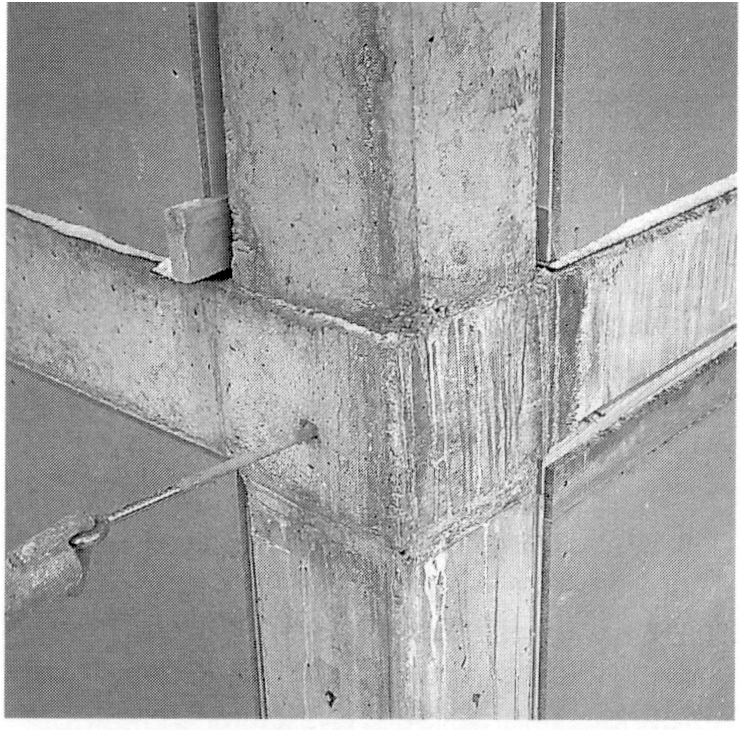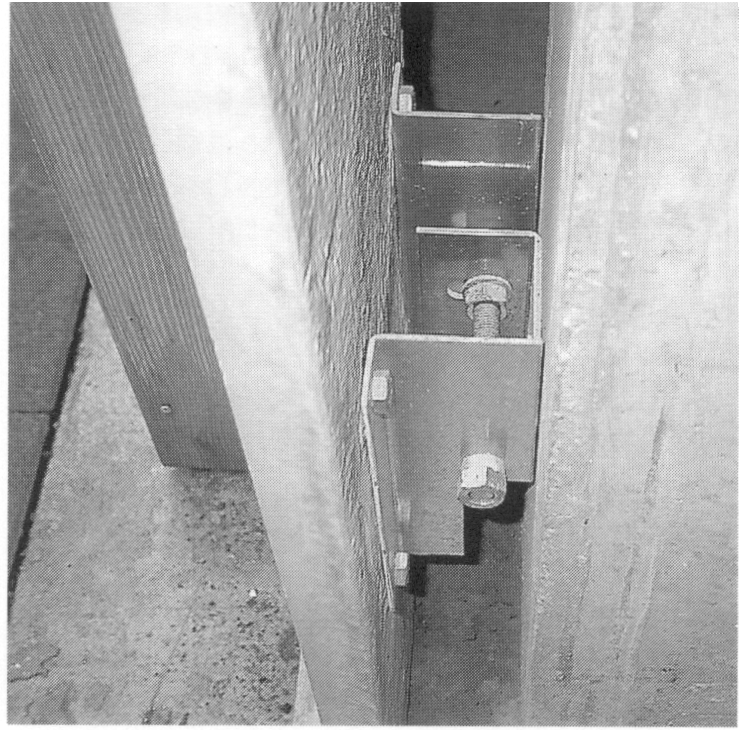|
Notable Features |
|
|
 |
Prefabricated concrete elements |
 |
Flexible building system |
|
 |
|
Basic Information |
|
|
|
Location
: |
|
Kassel, Germany |
|
Building Type : |
|
Office and
residential |
|
Architect : |
|
Alexander Reichel |
|
"Mitarbeiter"
: |
|
Johanna Reichel - Vossen, Stefan
Seibert, Caroline Ossenberg-Engels, Elke Radloff |
|
Tragwerksplaner
: |
|
Hobein, Kleinhans, Marx, Hochtief AG |
 |
| . |
|
The Building System |
|
|
  |
|
|
|
To allow for
maximum flexibility, the idea was to develop a 3D load-bearing structure that
could be extended in all directions and would provide functionally neutral
spaces. The openings between the structural elements could be filled with
various wall panels, depending on the usage required. The building was divided
into 3 different systems: |
|
|
 |
The
load-bearing structure: reinforced concrete skeleton frame, filigree
floors, filigree walls. |
 |
Timber framed elements: closed elements, elements with large window
strips, elements with small window strips, room-height glazing. |
 |
Cladding elements: cladding to columns, beams and wall panels. |

 |
|
Construction process: |
|
After
completion of the basic structure, timber framed elements were installed within
a period of 14 days. The elements were supplied ready clad on all faces with
cement-bonded chipboard. The external insulation to the load-bearing columns and
beams was added after the infill panels had been fixed in position. |
  |
 |
|
|
|
|
![]() |
|
|
Overview |
|
|
|
The project
brief required a maximum flexibility in the use and layout and possible
adaptation to various site conditions (accommodation to 9 different sites). The
dimensions of this building were 13.52 x 12.30 x 15.40 m high. |
|
|
 |
|
|
Prefabricated
Elements |
|
|
|
A maximum
number of elements were prefabricated and delivered to site ready for assembly.
The additional time and effort invested in the detailing would be balanced out
by a quicker and simpler assembly process on site. |
|
  |
|
|
|
Glass-fibre-reinforced
concrete was used for the precast concrete cladding to avoid corrosion of the
reinforcement and allowed the use of elements with slender dimensions, lower
weight and smooth, even surface and sharp arises. Also the thickness was only 3
cm. It also enabled the thickness of the wall elements to be reduced and
therefore the volume of materials delivered to site and structural loading were
minimized, allowing economic advantages. Glass-fibre-reinforced concrete
consisted of fine-grained cement concrete (aggregates < 4 mm) in which
alkali-resistant glass fibres (roughly 2-4 mm long) were mixed. The fibres
provided reinforcement against tensile stresses and cracking. |
|
|
|
The elements
used in this project were generally 3.0 x 1.7 m and 3 cm thick. The clips
consisted of 2 U-shaped interlocking stainless-steel components allowing the
construction to be adjusted horizontally and vertically. The cladding elements
were fixed to the U-sections by means of inbuilt hooks. All precast elements
were subjected to hydrophobic treatment for water-repellent. |
 |
|
|
 |
|
|
|
Sources |
|
|
|
Detail, Serie 2001, No.4, Modular systems,
p674-679 and p700 |
|
|
 |
|
|
|









